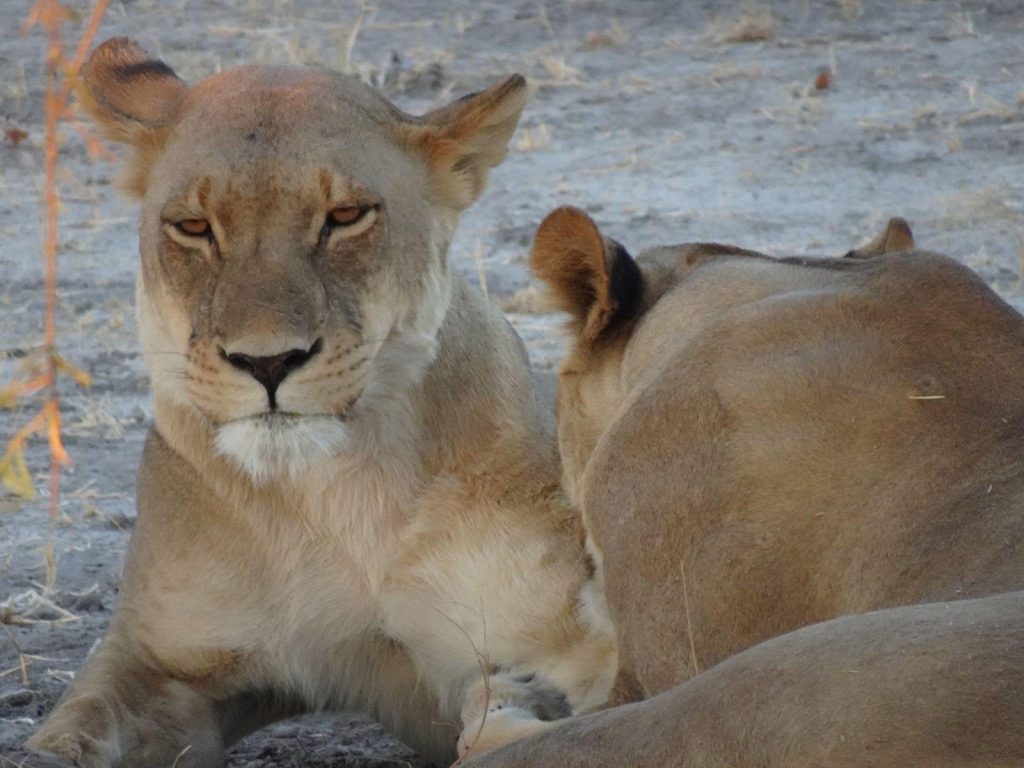By: Sierra Rothman-Haji, Colby College
We started our trip in Kaziikini, celebrating Botswana’s Independence Day in Sankoyo. We met amazing people, played with so many adorable children, and even spent time watching the highly ranked Sankoyo football team (I feel wrong writing soccer)! We practiced our Setswana; the only phrase I truly know is “I don’t speak Setswana”, but everyone was happy to indulge us in the learning process! Berkely was by far the kid whisperer, as every time we looked over, she was absolutely surrounded by a whole herd of children laughing, smiling, and running around. Dix and SB introduced us to the Chief and Chairman of the village, who kindly invited us to eat with them. We spoke with a documentary crew that joined the celebration after filming for Khwai Community Trust earlier in the morning. We listened to music and danced with the children until the much-awaited football final that took place around 4:00 pm. The team I was rooting for lost, so I had to give Dix two lollipops as per our bet. All in all, it was amazing getting to spend time in Sankoyo on such a fun and celebratory day!
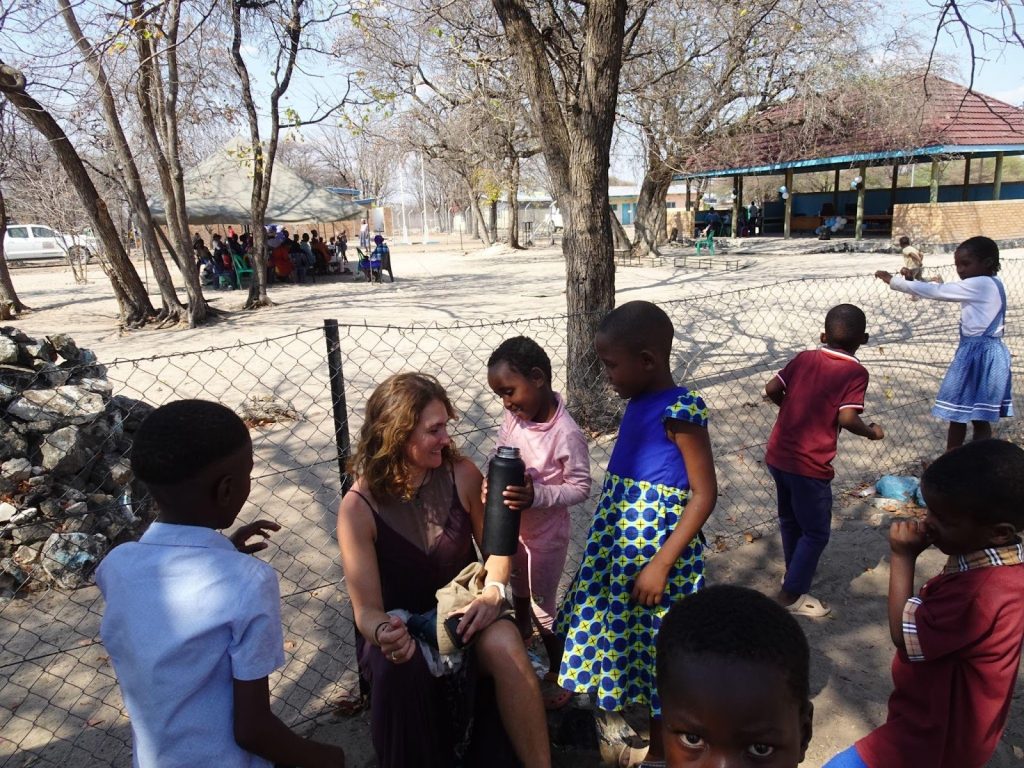
The routine of waking up at 5:00 am is finally becoming second nature. When I look out our car windows on a transect, I feel like I know more plants and animals every day, and I’m able to truly appreciate the role they play in the environment. On our transects, we saw some incredible animals such as a Kori Bustard (Botswana’s national bird), Ostriches with chicks, and even a juvenile Southern Giraffe! Two of our transects drove along the vet fence, allowing us to visualize the fence we have been learning so much about in our Humans and the Environment classes. We have learned that the fence is supposed to keep out wildlife, specifically the Cape Buffalo, so that they don’t interact with the cattle found on the farming side of the fence and pass on diseases. However, when driving along the fence, there was clear evidence of animals either stepping on the fence to break it or tunneling under to access the farming area on the other side. We watched Elephants forage for food on the farming side, a Bat-Eared fox in its den built between the fence lines, and many skulls and bones lining the fence of animals that got trapped (mostly giraffes) while trying to cross.
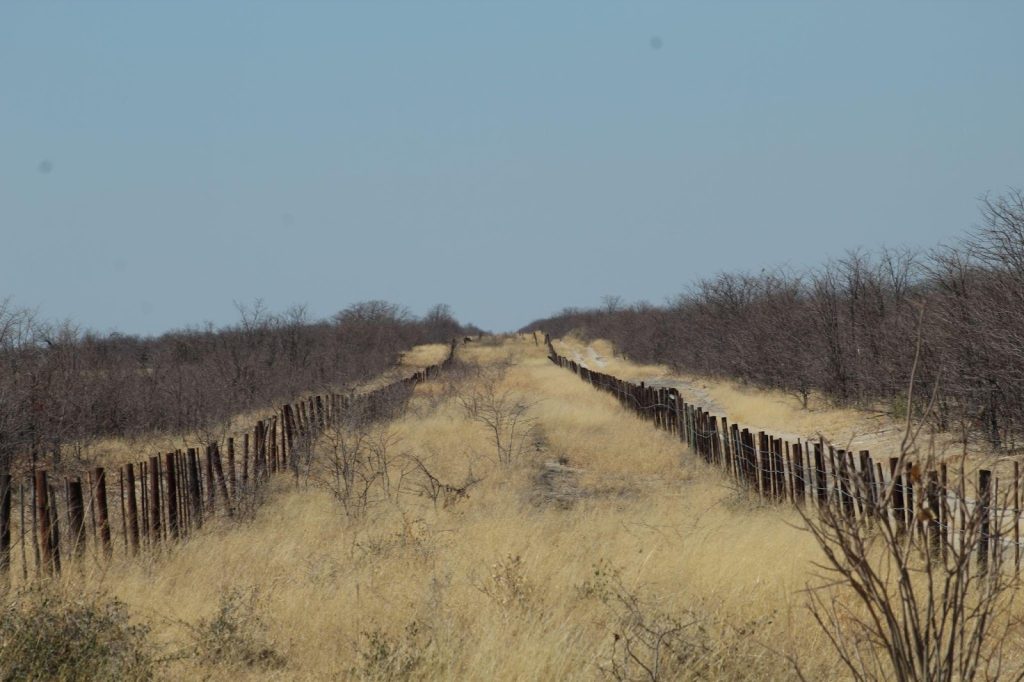
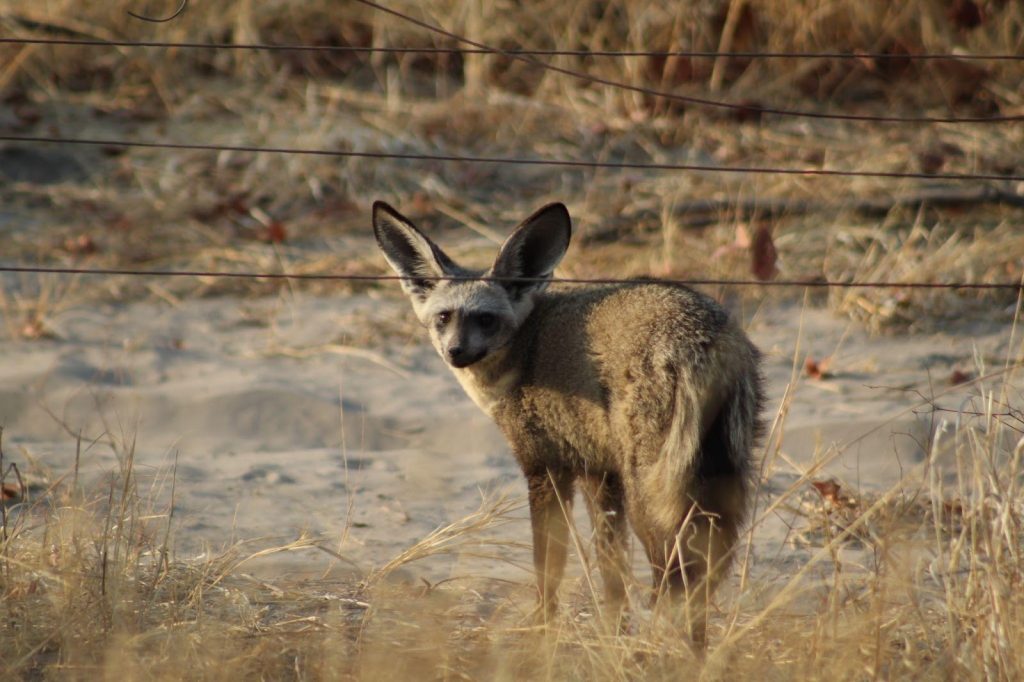
Though it was amazing to see animals of all types while on transect, one of the most memorable moments was stumbling upon a male elephant carcass. Colin, Stephanie, Lily, and I watched as two adult female Spotted Hyenas and a Black-Backed Jackal scavenged on the carcass. The body had been broken into two, so there was clear sight into the rib cage and skull of the elephant. A couple of days later, we decided to place one of our camera traps near the carcass to capture any other animals. This allowed us to get up close to the carcass and examine it thoroughly. The smell was unbelievably bad, sticking to the inside of my nose for a solid hour afterwards. However, the experience of getting to see elephant tusks up close, as well as touching the foot pads and skin, was once in a lifetime! When we went back to collect the camera, the carcass was severely depleted compared to when we had first seen it. When looking at the camera trap, it revealed more hyenas feeding on the carcass. The memories of this experience, as well as the smell, will never leave me.
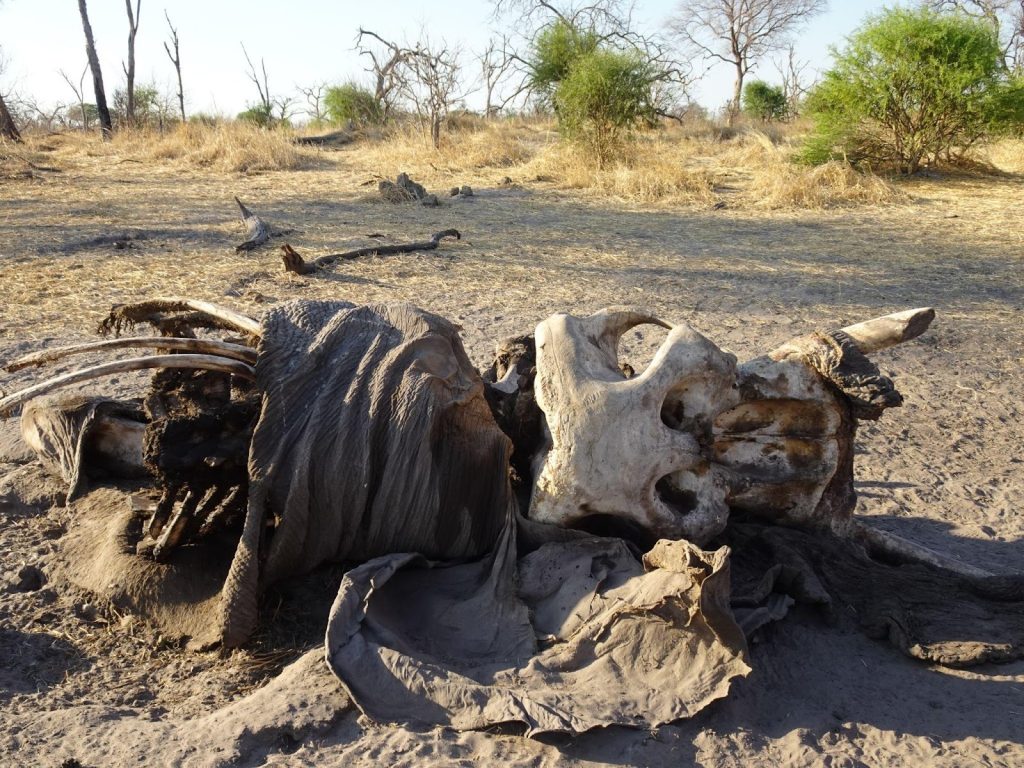
It is so hard to believe, but we have officially completed over a third of our time here in Botswana! Our time in Kaziikini felt short, but so much was seen and done. This trip out into the field went by way too quick. I can’t speak for everyone, but I finally understand how to take down and set up my tent without too much difficulty. Next up is Mopane camp and the realization that we have midterms and are almost halfway done with the program.
